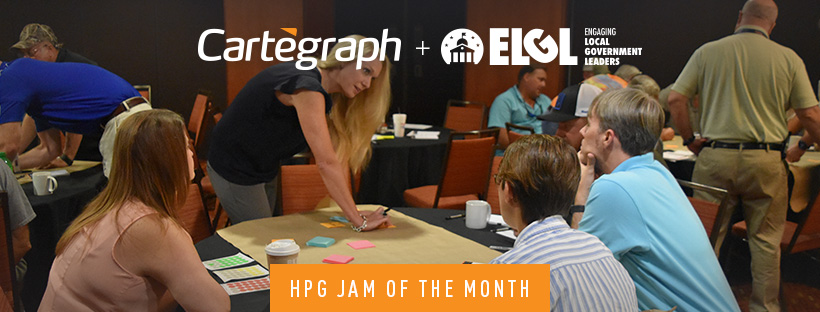
 This guest blog is by ELGL member Daniel Johns the GIS manager for the Clay County Utility Authority in Florida. Connect with Daniel!
This guest blog is by ELGL member Daniel Johns the GIS manager for the Clay County Utility Authority in Florida. Connect with Daniel!
Is building more efficient processes challenging for your organization? If so, you’re not alone. Changing behavior to drive efficiency is one of the most challenging things a team faces. But, it doesn’t have to be that way. It’s just a matter of asking the right question.
When setting out to streamline a process, I’ve found that people typically start with these two questions:
- “How do we begin?”
- “Where do we begin?”
Unfortunately, these tend to be the most overwhelming and difficult questions to answer. In my experience at the Clay County Utility Authority (CCUA), I’ve found there’s one question that leads us to identify processes that can easily be improved upon. It’s a simple question, but one that often goes unasked:
“Why do we do it this way?”
When I ask this question, the most common response from our employees is, “Well, we’ve always done it that way.” Processes themselves are often generational to an organization’s staff. Those that came before us were pioneers at the time, and the process they created was originally innovative and helped push the organization forward.
As time passed, however, the process eventually went stale due to a lack of improvement or future evaluation of its need in the organization. In time, senior staff leave, taking that institutional knowledge of the process with them.
And, a new generation of staff must come in to learn. In most cases, the same processes are still in place, with little to no change or innovation. Thus, leading us to the, “We’ve always done it that way,” response.
The goal then, is to break the norm and improve most—if not all processes—by asking that critical question: “Why do we do it this way?” Since we’ve started asking this question at CCUA—and given ourselves permission to change “the way we’ve always done it,” we’ve made great progress.
We’ve been able to automate several processes over the past few years: cutting inspection time in half, alerting staff to issues quickly, eliminating the need for paper service orders, and improving our project scoping and management.
Implementing those changes and seeing those results has helped our organization establish a mindset of high-performance government, a commitment to being better today than we were yesterday.
This mindset shift—and the results it created—led us to think of new processes to automate. So, Project Automation of Things was born (a.k.a. working smarter, not harder).
Early on in my career, increasing efficiency was as simple as adding a plot stamp of staff initials to printed sheets that saved hundreds of dollars on paper.
Later in my career, it’s grown to taking challenging processes out of one system and moving them to a more streamlined and automated system that has saved us over $100,000.
As professionals, we must understand that’s there’s always a way to take a process and improve it. We just need to be willing to accept that and move forward. Fear of replacement or loss of job security should never be a concern.
The evaluation of improving processes begins with identifying and determining if there’s value in improving it (“why). If there’s not a measurable return on investment or overall improvement in the quality of work or time, then the process could be left alone. The list below is a summary of steps that could be followed as you’re working to improve a process at your organization:
- Storyboard, map, or write the process down—teaming up with the individual staff members responsible for performing the activities.
- Document the initial time, cost, or other measurables to later determine the return on investment.
- Identify potential areas for improvement.
- Select one part of the process to improve.
- Train, encourage, and mentor staff on the change so they’re successful.
- Capture new time, cost, or other measurables to establish the return on investment.
- Review, present results, and discuss lessons learned.
- Repeat.
The list may sound straightforward, but it does take effort and drive.
Professionally, I had to think outside-the-box and include myself in the processes as they occurred. Getting involved allowed me to understand how information flowed and where the deficiencies existed.
The effort included field observations as well as performing the process the old and new way for comparison. I was able to learn new processes throughout the organization, grow as a professional, and become an ambassador of high-performance government.
